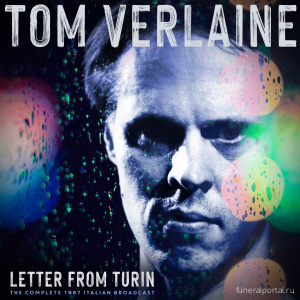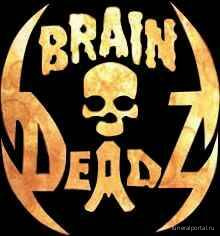
Foundation Partners Group offers ‘multisensory experience rooms’ that conjure up a beach, mountain or football stadium. The price is included in the company’s funeral-service fees, CEO Brad Rex says. PHOTO: EVE EDELHEIT FOR THE WALL STREET JOURNAL
By JAMES R. HAGERTY
As more Americans choose cremation—often dispensing with the need for caskets, burial plots and dreary rituals—the funeral industry is reinventing itself. The goal: stay relevant and avoid a plunge in profit.
“This industry was really built around selling a casket,” Thomas Ryan, chief executive ofService Corp. International, the largest U.S. operator of funeral homes, said in an interview. “Now it’s really about remembering the person.”
That can mean elaborate pageantry. “We don’t call it a funeral service,” said Brad Rex,chief executive of Foundation Partners Group, which owns 50 funeral homes and nine cemeteries in 14 states. “We call it a gathering.”
Most of Foundation’s homes have a “multisensory experience room,” said Mr. Rex, who previously ran Walt Disney Co.’s Epcot theme park in Orlando. Using audio and video equipment, the experience rooms can create the atmosphere of a golf course, complete with the scent of newly mowed grass, to salute the life of a golfing fanatic. Or it can conjure up a beach, mountain or football stadium. The price is included in the company’s funeral-service fees, typically ranging from $4,000 to $8,000, Mr. Rex said.
Many funeral homes are eliminating casket-viewing rooms, considered depressing. Instead, customers view service and merchandise options on flat screens, “just like if you shop on Amazon,” Mr. Rex said.

Another strategy is to apply more salesmanship to people seeking a basic $700 cremation. Service Corp.’s salespeople ask those customers to think about what will happen to the ashes.
“Because you can either get them back in what looks like a Chinese food container, or we can have something very respectful and nice; that’s an urn that may be $400 or $500, but it’s beautiful and you can put it on the mantel,” Mr. Ryan, the CEO, said in a recent investor presentation.
Another possible add-on costing $300 to $400: insurance in case you die away from home and your body needs to be shipped.
As baby boomers age, the number of deaths in the U.S. is projected to rise to about 3.6 million in 2036 from 2.7 million this year. But that doesn’t mean a surge in casket sales: About half of U.S. deaths this year are expected to result in cremation, up from less than 10% in 1980. The proportion will keep rising and should top 70% by 2030, according to the National Funeral Directors Association.
The research firm Freedonia Group projects that U.S. casket shipments from manufacturers in 2020 will total $456 million, down from $603 million in 2015 and $1.2 billion in 2000. Lower revenue from casket sales already is squeezing some funeral homes. The number of such homes in the U.S. is estimated at 19,350, down 12% from 2000.
Kathryn McMiller, 60, a health-records consultant in Rancho Santa Margarita, Calif., probably won’t need a funeral home. When the time comes, Ms. McMiller wants to be cremated and sees no need for a service or burial plot. She has lived in 10 states and doesn’t have a hometown.
“What’s the point of being buried somewhere?” she asked.

Mr. Rex shows how to control the audio and visuals from an iPad in front of a projection that could be used during funeral services. PHOTO: EVE EDELHEIT FOR THE WALL STREET JOURNAL
Despite changing preferences, Service Corp.’s Mr. Ryan projects that his company’s revenue per funeral can increase 1% to 2% a year as the array of services and products grows.
Casket makers say they believe more families who choose cremation will also buy, or even rent, a casket for viewings. Meanwhile, the choice of urns is growing. Walmart.com offers them for as little as $25, but high-end urns can cost more than $1,000. Some are shaped like motorcycle fuel tanks; others like ducks or baseballs.
The funeral industry also offers myriad alternatives for ashes, including services that rocket remains into space. Remains can be incorporated into jewelry, lawn statues and even furniture. “You buy a bench, and you put mom and dad in this granite bench,” saidLawrence Miller, chief executive of StoneMor Partners LP, an operator of cemeteries and funeral homes.
Some funeral home operators offer premium and discount brands. Premier Care of Florida Inc., which owns seven funeral homes in the Tampa Bay, Fla., area, has an upscale service allowing customers to meet with a funeral director at any hour, including on holidays and weekends. The home handles the death-certificate paperwork, picks up relatives at the airport and offers grief support and other services. The average cost is around $6,500. The no-frills service averages about $1,500.
In Cedar Rapids, Iowa, the Brosh Chapel funeral home also offers space for other types of events, including weddings and reunions. A catering team provides meals on site or elsewhere. “We don’t use the term funeral,” said Matt Linn, the 43-year-old owner of Brosh Chapel. His title is celebration-event coordinator.
Old-style funeral homes “are extinct,” Mr. Linn said. “You have to adapt.”







